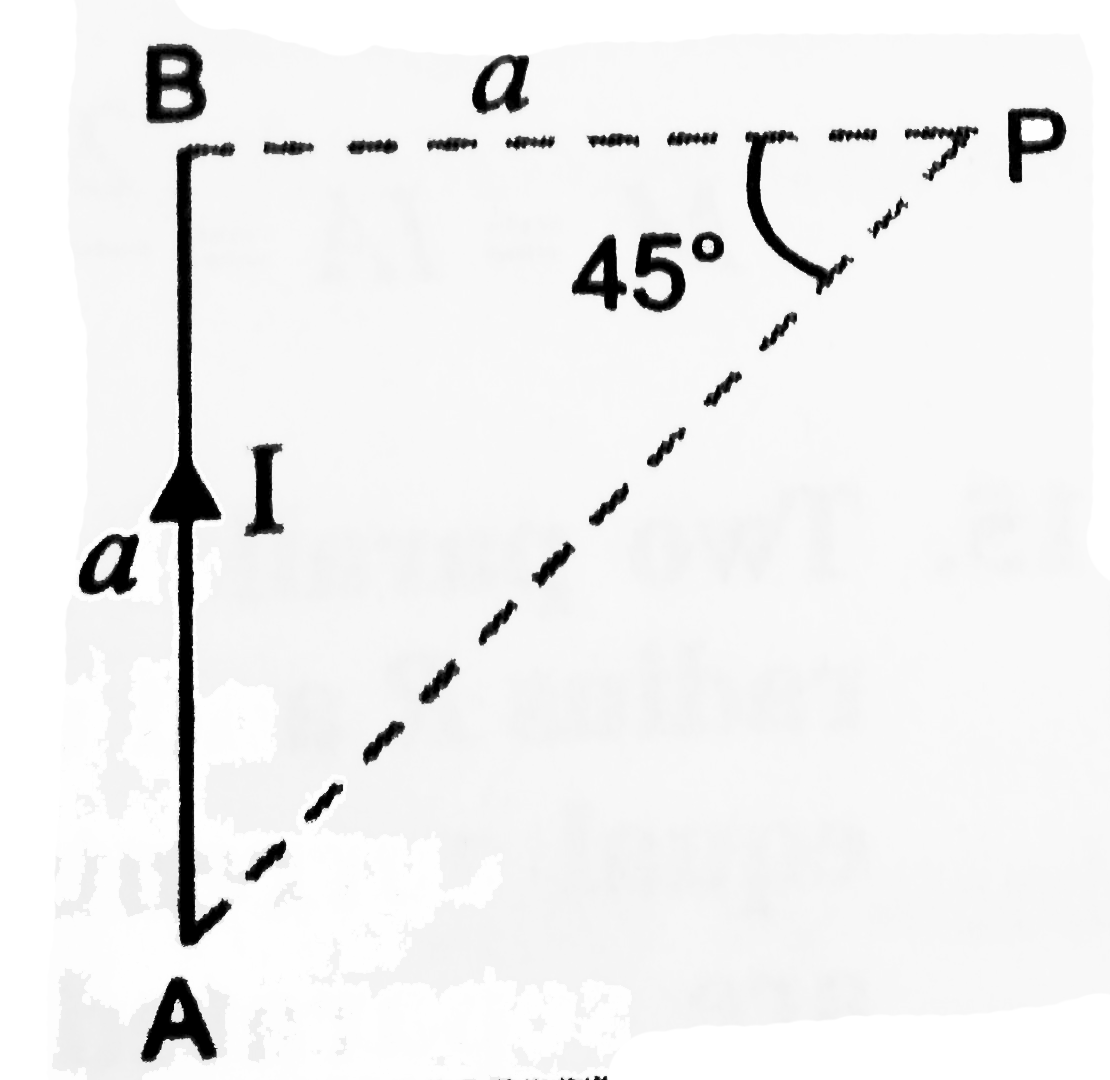A copper wire of diameter 1.6 mm carries a current of 20A. Find the maximum magnitude of the magnetic field (vec B)due to this current.
To find the maximum magnitude of the magnetic field (B) due to a current-carrying copper wire, we can follow these steps:
Step 1: Identify the given values
- Diameter of the copper wire (d) = 1.6 mm = 1.6 × 10^-3 m
- Current (I) = 20 A
Step 2: Calculate the radius of the wire
The radius (r) is half of the diameter:
r=d2=1.6×10−32=0.8×10−3m
Step 3: Use the formula for the magnetic field around a long straight wire
The magnetic field (B) at a distance (d) from a long straight wire carrying current (I) is given by:
B=μ0I2πd
where μ0 (the permeability of free space) is approximately 4π×10−7T m/A.
Step 4: Determine the distance for maximum magnetic field
For maximum magnetic field, we need to consider the distance equal to the radius of the wire (r):
d=r=0.8×10−3m
Step 5: Substitute the values into the formula
Substituting the values of μ0, I, and r into the formula:
B=4π×10−7×202π×(0.8×10−3)
Step 6: Simplify the equation
The π cancels out:
B=4×10−7×202×(0.8×10−3)
B=80×10−71.6×10−3
Step 7: Calculate the magnetic field
Calculating the above expression:
B=80×10−71.6×10−3=0.5×10−2T=5×10−3T
Final Answer
The maximum magnitude of the magnetic field (B) due to the current in the copper wire is:
B=5×10−3Tor5mT
---
- Diameter of the copper wire (d) = 1.6 mm = 1.6 × 10^-3 m
- Current (I) = 20 A
The radius (r) is half of the diameter:
r=d2=1.6×10−32=0.8×10−3m
The magnetic field (B) at a distance (d) from a long straight wire carrying current (I) is given by:
B=μ0I2πd
where μ0 (the permeability of free space) is approximately 4π×10−7T m/A.
For maximum magnetic field, we need to consider the distance equal to the radius of the wire (r):
d=r=0.8×10−3m
Substituting the values of μ0, I, and r into the formula:
B=4π×10−7×202π×(0.8×10−3)
The π cancels out:
B=4×10−7×202×(0.8×10−3)
B=80×10−71.6×10−3
Calculating the above expression:
B=80×10−71.6×10−3=0.5×10−2T=5×10−3T
The maximum magnitude of the magnetic field (B) due to the current in the copper wire is:
B=5×10−3Tor5mT
Topper's Solved these Questions
- MAGNETIC FIELD DUE TO CURRENTBOOK - HC VERMA ENGLISHCHAPTER - MAGNETIC FIELD DUE TO CURRENTEXERCISE - questions for short answer
12 Videos
- MAGNETIC FIELD DUE TO CURRENTBOOK - HC VERMA ENGLISHCHAPTER - MAGNETIC FIELD DUE TO CURRENTEXERCISE - Objective 2
7 Videos
- MAGNETIC FIELDBOOK - HC VERMA ENGLISHCHAPTER - MAGNETIC FIELDEXERCISE - objective2
9 Videos
- MAGNETIC PROPERTIES OF MATTERBOOK - HC VERMA ENGLISHCHAPTER - MAGNETIC PROPERTIES OF MATTEREXERCISE - Short Answer
6 Videos
Similar Questions
A circular coil of 200 turns has a radius of 10 cm and carries a current of 2.0 A. (a) Find the magnitude of the magnetic field (→B) at the centre of the coil. (b) At what distance from the centre along the axis of the coil will the field B drop to half its value at the centre?
View SolutionConsider a 10-cm long piece of a wire which carries a current of 10A . Find the magnitude of the magnetic field due to the piece at a point which makes an equilateral triangle with the ends of the piece.
View SolutionFigure shows a straight wire of length a carrying a current I. What is the magnitude of magnetic field induction produced by the current at P, which is lying at a perpendicular distance a from one end of the wire.


View SolutionA straight wilre of diameter 0.5mm carrying a current 2A is replaced by another wire of diameter 1mm carrying the same current. The strength of magnetic field at a distance 2m away from the centre is
View SolutionA long straight wire carries a current of 35A. What is the magnitude of the field →B at a point 20cm from the wire?
View SolutionA long, cylindrical wire of radius b carries a current i distributed uniformly over its cross section. Find the magnitude of the magnetic field at a point inside the wire at a distance a from the axis.
View SolutionA wire shaped to a regular hexagon of side 2cm carries a current of 2A. Find the magnetic field at the cetre of the hexagon.
View SolutionA wire shaped to a regular hexagon of side 2cm carries a current of 2A. Find the magnetic field at the cetre of the hexagon.
View SolutionA staright wire of length (π2) meter is carrying a current of 2A and the magnetic field due to it is measured at a point distant 1cm from it. If the wire is to be bent into a circles and is to carry the same current as before, the ratio of the magnetic field at its centre to that obtained in the first case would be
View SolutionA circular coil of 200 mm diameter is made of 100 turns of thin wire and carries a current of 50 mA. Find the magnetic field induction at the centre of the coil.
View Solution